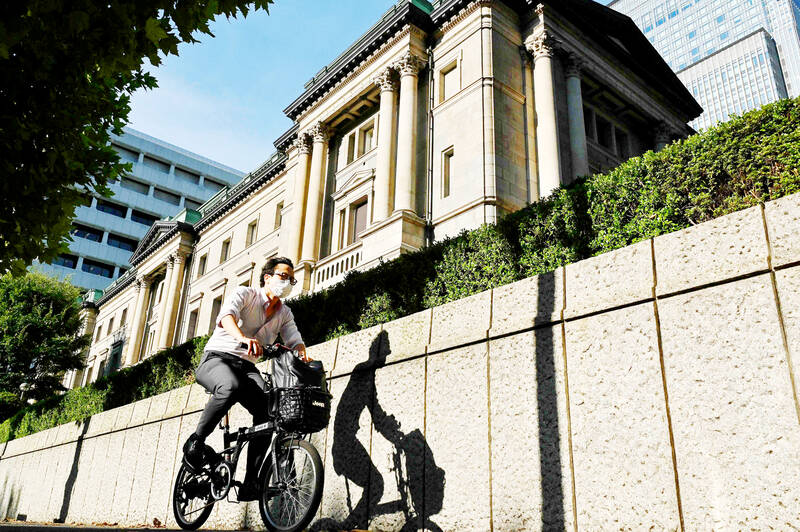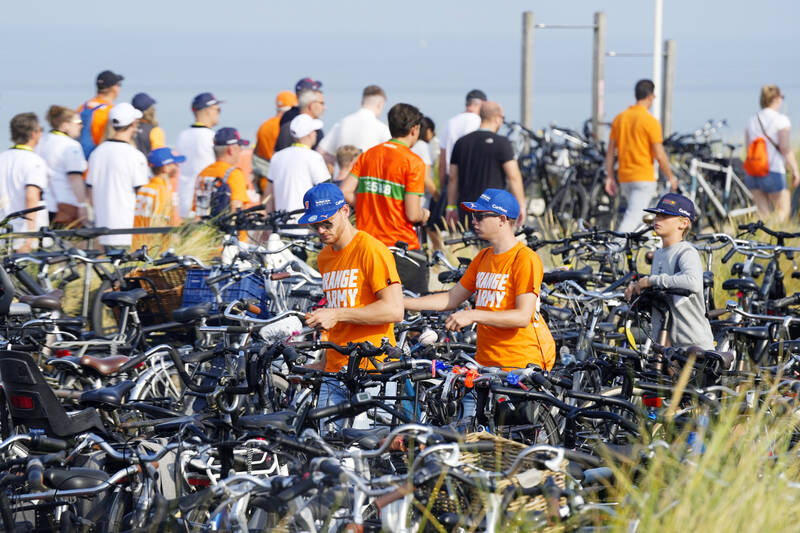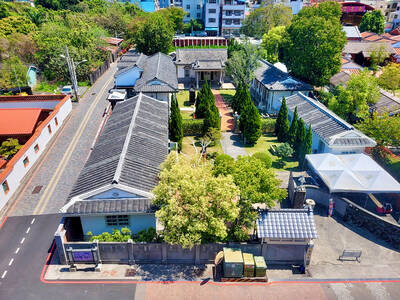The number of people who ride their bikes to work in the US has been steadily falling over the past few years, even before the pandemic, according to data collected by nonprofit League of American Bicyclists. In 2014, about 900,000 people rode their bikes to work but in 2020, just over 783,000 did — about 0.5 percent of all workers.
Meanwhile, the number of bicyclists killed in the US continues to rise, from 723 in 2014, to 938 in 2020.
In response to a Guardian callout, US-based readers spoke of quitting cycling for various reasons. Some said that they got off the road because of age, and others because of health restrictions. But the main concern for the overwhelming majority was road safety; many had either personally been hit by a motorist or had seen too many reports of bicyclists getting struck by motorists to want to keep cycling.

Photo: AFP
However, the reason behind this concern for road safety from those who got in touch differed; some described an influx of distracted driving — drivers on cell phones — as well as blocked bike lanes from double-parked delivery vehicles and users of motorized scooters now sharing the lanes. Meanwhile, others talked about motorists harassing cyclists, aggressive drivers, roads not designed for bicyclists and an increase in bicycling traffic adding to the dangers they faced. Some readers noted a lack of respect that motorists seemed to have for cyclists, whether in the form of road rage — or worse.
Here, readers from around the US explain why they have given up riding their bikes on the road.
‘WHAT USED TO BE FUN HAS BECOME FEARFUL’

Photo: AP
The density of double-parked delivery vehicles in dedicated bike lanes and increased traffic on Brooklyn’s streets have made cycling dangerous. I used to enjoy going from Bay Ridge in Brooklyn to Riis Park in Queens, but many drivers are distracted by their cell phones and frequently do not observe stop signs or engage in defensive driving. What used to be fun has become fearful. Bruce Rerek, 65, retired caterer; Brooklyn New York
‘THE INCREASE IN BICYCLE TRAFFIC ITSELF HAS CREATED HAZARDS’
After moving to Berkeley, California in 1992, I soon realized that the roads in the East Bay had outgrown their designed motor vehicle capacity 30 years prior and were never designed for bicycle traffic. I have lived in the Berkeley Hills for nearly 30 years. Regularly bicycling to or from anywhere that is hilly for any reason is not practical. This is not the Netherlands. I soon stopped bicycling on a regular basis because of hilly terrain, increased traffic, poor road surface condition and general issues of safety.
Since then, the increase in bicycle traffic has itself created hazards. There are more bicyclists, the overwhelming majority of whom have no idea how to properly operate a bicycle as a vehicle in traffic. That there are not just painted bicycle lanes, but physically separated bicycle lanes on what once were motor vehicle roads is evidence supporting that view. On more than one occasion I have encountered a bicycle proceeding against the flow of traffic on a three-lane roadway with no shoulder on either side.
It has become almost cliche, but it is in my experience that inexperienced bicyclists behave as if stop signs do not apply to them. As a result, drivers have become overly cautious in the presence of bicycles, relinquishing their right of way to a bicycle in what has become a distracting road hazard. Michael, 79, retiree; Berkeley, California.
‘SEVERAL BAD CRASHES, TOO MANY CLOSE CALLS’
Two years ago I crashed head-on into an inattentive cyclist on a bike path. They were riding next to their friend, chatting, making eyes with one another. They drifted into me at the last moment. It was the height of the pandemic — they had no masks, no helmets. I was badly injured and will never be the same.
This was the last straw for me. I have had several bad crashes over the years and too many close calls with motorized traffic to count. Some of these encounters were with drivers who saw me and threatened me with their vehicles, some with drivers who failed to see me. Ask any urban cyclist — such encounters are routine. Ray Hogan, 72, retired nurse; Portland, Oregon
‘IT JUST FEELS TOO DANGEROUS’
Traffic has increased rapidly over the last three to four years. While we have marked bike lanes, they are not separated from the street by barriers. People are driving fast both on city streets and freeways, running stop signs and driving aggressively. There is little traffic law enforcement on city streets. It just feels too dangerous. Ruth Meacham, 76, retired teacher; Bellingham, Washington
‘THERE IS TOO MUCH ROAD RAGE’
I’ve never owned a car and spent my adult life riding a bike. I raised my son, who is now 22, on a bike. After hundreds of thousands of miles, I was hit for the first time from behind in 2015. I was so fit and strong that I only suffered soft tissue damage when I rolled onto the grassy shoulder, but in 2017, I was hit for the second time and I broke my right leg so badly I needed a bone marrow transplant.
Even after that, I started taking my folding bike out on the road with me in my truck just to ride around different places, but it is too dangerous and there is too much road rage. People who are willing to try and drive aggressively with an 80,000-pound semi truck will think nothing of running over a human being on a bicycle just because they think they are in the way and a nuisance. Gretchen Elsner, 42, long-haul truck driver; Athens, Georgia,
‘THERE ARE VERY FEW DEDICATED BIKE LANES’
I have been a bicyclist my entire life. I cycled in college, and on vacation. I started cycling again regularly just as the pandemic started. I have biked almost every day since March 2020, but I stopped biking to my gym about a month ago.
It’s dangerous to bike around here because there are very few dedicated bike lanes. We do have very nice bike trails within the parks and the woods, but it is dangerous when a bicyclist has to travel near major roads. The sidewalks are extremely close to the roads where cars travel at high speeds in a culture that seems hurried and gravitates around the phone.
There have been many, many accidents just in the past year where drivers have hit and killed children at bus stops, bicyclists on sidewalks, and most recently, a young mother of two who was cycling in plain daylight in a dedicated bike lane in Bethesda. She survived many dangerous war zones as a state department employee, only to be killed by a moving truck in a dedicated bike lane in the US.
Not long before that, another young state department employee was killed in a Washington DC street, again where she was hit by a truck. These two young women were in their early 40s, the same age as my own children, so these accidents really left an impact on me. Fran, 69, computer analyst; Bethesda, Maryland.

April 28 to May 4 During the Japanese colonial era, a city’s “first” high school typically served Japanese students, while Taiwanese attended the “second” high school. Only in Taichung was this reversed. That’s because when Taichung First High School opened its doors on May 1, 1915 to serve Taiwanese students who were previously barred from secondary education, it was the only high school in town. Former principal Hideo Azukisawa threatened to quit when the government in 1922 attempted to transfer the “first” designation to a new local high school for Japanese students, leading to this unusual situation. Prior to the Taichung First

Chinese Nationalist Party (KMT) Chairman Eric Chu (朱立倫) hatched a bold plan to charge forward and seize the initiative when he held a protest in front of the Taipei City Prosecutors’ Office. Though risky, because illegal, its success would help tackle at least six problems facing both himself and the KMT. What he did not see coming was Taipei Mayor Chiang Wan-an (將萬安) tripping him up out of the gate. In spite of Chu being the most consequential and successful KMT chairman since the early 2010s — arguably saving the party from financial ruin and restoring its electoral viability —

The Ministry of Education last month proposed a nationwide ban on mobile devices in schools, aiming to curb concerns over student phone addiction. Under the revised regulation, which will take effect in August, teachers and schools will be required to collect mobile devices — including phones, laptops and wearables devices — for safekeeping during school hours, unless they are being used for educational purposes. For Chang Fong-ching (張鳳琴), the ban will have a positive impact. “It’s a good move,” says the professor in the department of

Toward the outside edge of Taichung City, in Wufeng District (霧峰去), sits a sprawling collection of single-story buildings with tiled roofs belonging to the Wufeng Lin (霧峰林家) family, who rose to prominence through success in military, commercial, and artistic endeavors in the 19th century. Most of these buildings have brick walls and tiled roofs in the traditional reddish-brown color, but in the middle is one incongruous property with bright white walls and a black tiled roof: Yipu Garden (頤圃). Purists may scoff at the Japanese-style exterior and its radical departure from the Fujianese architectural style of the surrounding buildings. However, the property